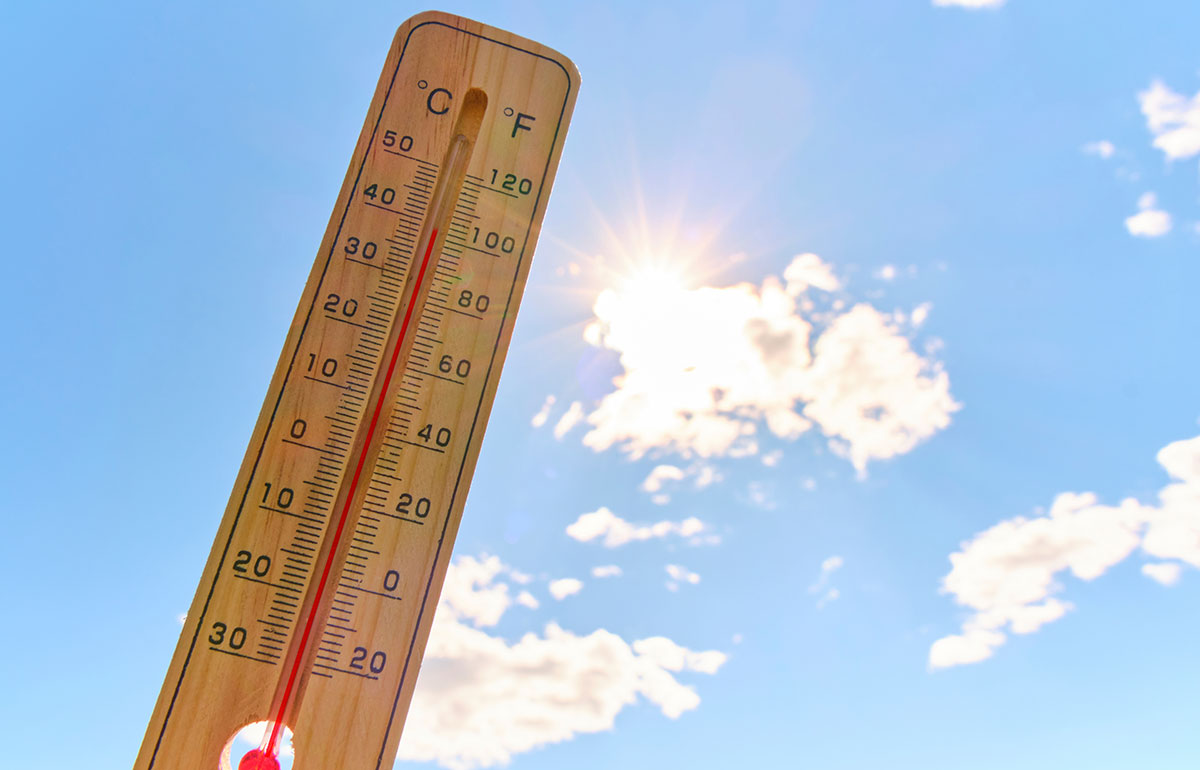Summer in KC is a joyous time – the sun is shining, the fountains are flowing and the pools are packed. Unfortunately, summer also means hot temperatures and high humidity that seem to be breaking records year after year. In August 2023, the heat index soared to 121 degrees in Kansas City, MO. (1) Temperatures that high aren’t just uncomfortable, they are deadly. In fact, 2023 saw more heat-related deaths than any other year on record with 2,300 lives lost across the United States. (2)
In our ever-changing climate, scientists are projecting the number of stifling hot days is only going to increase as time goes on. By 2050, it is expected Kansas City will average over five weeks of temperatures exceeding 97 degrees not including heat index. That’s up from an average of just one week of extreme heat in 1990. (3)
As the mercury continues to rise, it is more important than ever to find sustainable solutions for beating the heat and keeping our community safe, especially for those most vulnerable to extreme heat events. At Bridging The Gap, we are on the front lines of the fight to keep our city cool and livable for everyone.
During last summer’s “heat dome,” our team took to the streets to find out just how much a tree can help us stay cool. We measured surface temperatures of pavement in full sun versus in the shade of a tree and found just a little bit of shade can keep the temperatures nearly 20 degrees lower.

By Autumn Weir. Autumn is a former Heartland Tree Alliance Program Coordinator.

Temperature readings taken on 8/22/23 at 5:30PM; the index was 117 degrees.
We also measured the difference in surface temperatures between shaded asphalt and shaded grass. The grassy area stayed over fifteen degrees cooler than the shaded asphalt and a whopping thirty-one degrees cooler than the unshaded asphalt.

Temperature readings taken on 8/22/23 at 5:30PM; the index was 117 degrees.
The Heat Island Effect
These measurements demonstrate the heat island effect on a small scale and show how much cooler natural spaces stay as opposed to impervious surfaces such as pavement and buildings. Cities have higher concentrations of these impervious surfaces which absorb and re-emit the sun’s energy more than natural spaces like forests and prairies. This heat island effect is compounded in areas that lack access to trees, vegetation, or bodies of water, which can all help reduce temperatures. (4)
In 2021, the Urban Heat Watch program examined the heat island effect specifically in Kansas City, MO, to see which areas of our community are at the greatest risk for extreme temperatures. (5) They found some parts of our city are averaging ten degrees warmer than others. It is no surprise the hottest parts of Kansas City are also the areas with more impervious surfaces and less green space.

Heat Watch Kansas City Report: https://osf.io/3fh29
Green Infrastructure Can Help
These temperature readings show just how much green infrastructure can help our communities stay cool and safe as we experience hotter summers. But what exactly is green infrastructure?
Green infrastructure is one of the leading solutions for combatting dangerously high temperatures in cities across the globe. According to one definition by American Rivers, it “incorporates both the natural environment and engineered systems to provide clean water, conserve ecosystem values and functions, and provide a wide array of benefits to people and wildlife”. (6) Examples of green infrastructure include the 230 rain gardens that our Green Stewards program helps manage, the hundreds of street trees Heartland Tree Alliance plants throughout the metro each year, and the preservation of existing native ecosystems like the remnant prairies KC Wildlands manages.
While Bridging The Gap takes on large scale green infrastructure, there are many things you can do to help better our community on a smaller scale. Planting a tree, adding native plants to your yard, or your balcony if you’re in an apartment, and having a rain barrel to collect stormwater are all examples of green infrastructure you can do right at home.
Of course, not everyone has a yard or even a balcony for growing plants or collecting rainwater. Thankfully, even if you’re not currently in a position to add greenery at your house, you can still get involved in the movement! Our organization has dozens of volunteer opportunities each month spread among several programs, so you can decide which activity sounds most exciting to you. Since nearly all of our work takes place in public spaces, the fruits of our labor are shared with everyone.
Whether you want to volunteer, get a free tree, or just need advice on native plants, our team is here to help. We love connecting with people like you who share our passion for making the world a better place not just for plants and animals, but for people, too. We hope to see you soon at one of our upcoming events!
Articles
- https://www.weather.gov/eax/August19-25HistoricHeatwave
- https://apnews.com/article/record-heat-deadly-climate-change-humidity-south-11de21a526e1cbe7e306c47c2f12438d
- https://climatecheck.com/missouri/kansas-city#:~:text=Heat%20risk%20in%20Kansas%20City%2C%20MO&text=By%202050%2C%20people%20in%20Kansas,more%20information%20on%20heat%20risk
- https://www.epa.gov/heatislands/learn-about-heat-islands
- https://osf.io/3fh29
- https://www.americanrivers.org/what-is-green-infrastructure/#:~:text=Green%20infrastructure%20is%20an%20approach,costly%20new%20water%20treatment%20plant.






